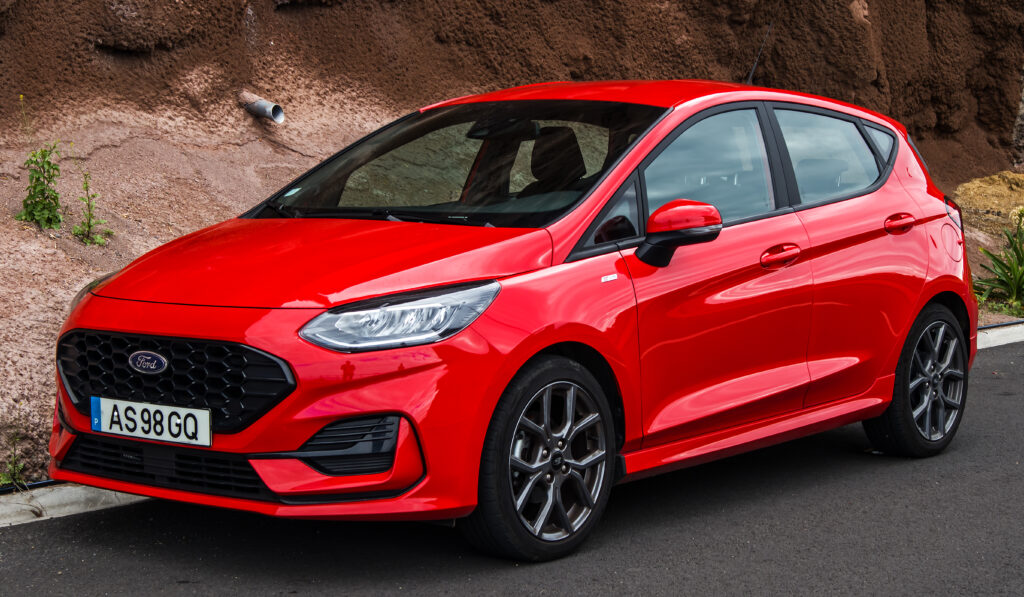
How to Identify Your Ford Fiesta Model: The Complete Expert Guide

Understanding exactly which Ford Fiesta model you own is essential for maintenance, parts compatibility, insurance accuracy, and resale value. Because the Fiesta spans multiple generations, facelifts, trims, engines, and region-specific editions, identifying your precise model requires more than simply checking the badge on the boot. In this expert guide, we provide a complete, step-by-step breakdown that allows you to pinpoint your Ford Fiesta model with absolute precision.
- Key Steps to Identify Your Exact Ford Fiesta Model
- Full List of Ford Fiesta Versions Across Generations
- Identifying Your Fiesta by Exterior and Interior Cues
- Ford Fiesta Generations Overview
- Understanding Ford Fiesta Engines and Identifying Yours
- How Many Gears Does a Ford Fiesta Have?
- Final Thoughts
Key Steps to Identify Your Exact Ford Fiesta Model
Accurately determining your Fiesta’s model involves analysing several identifiers found around the vehicle and in its documentation. Each offers crucial technical data that helps decode generation, trim level, engine variant, equipment configuration, and build year.
Year of Manufacture
The manufacturing year is the foundation of model identification, because each Ford Fiesta generation corresponds to strict production cycles.
You can confirm the year through:
- Vehicle registration document
- VIN plate in the engine bay
- Driver-door jamb sticker
Matching the year with Ford’s generation timeline quickly narrows down whether your car is, for example, a Mk5 (2002–2008), Mk6 (2008–2017), Mk7 (2017–2023), or earlier.
Vehicle Identification Number (VIN)
The VIN is the definitive fingerprint of your Fiesta. This 17-digit alphanumeric code reveals:
- Model variant
- Body style
- Engine family
- Gearbox type
- Factory configuration
- Assembly plant
It is typically located at:
- Lower left corner of the windscreen
- Driver-side door frame
- Engine bay VIN plate
Decoding the VIN instantly clarifies whether you have, for instance, a 1.0 EcoBoost Titanium, a 1.4 Zetec, or a Fiesta ST.
Specification Label
Ford places a comprehensive label on the driver-side door pillar containing critical data such as:
- Model code
- Paint code
- Axle ratio
- Engine identifier
- Gross vehicle weight information
- Factory options
This label acts like a snapshot of your Fiesta when it left the factory, ensuring you can identify the exact configuration down to colour and trim level.
You may be interested in reading SEAT Arona Trim Levels: The Complete, No-Nonsense Guide to Every Version
SEAT Arona Trim Levels: The Complete, No-Nonsense Guide to Every VersionFull List of Ford Fiesta Versions Across Generations
Over its long production history, the Fiesta has been offered in numerous trims, each targeting different types of drivers. Below we summarise the most recognisable variants across modern generations.
Essential Trim Levels
These mainstream versions focus on comfort and features suitable for daily use:
- S – Entry-level simplicity
- SE – Balanced equipment and value
- Titanium – Premium interior, upgraded tech
- Ghia (older generations) – Classic luxury specification
Sporty and Performance Trims
Designed for drivers who want a sharper driving feel and athletic design:
- Zetec / Zetec S
- ST-Line – Sport styling with efficient engines
- Red / Black Editions – Enhanced looks and power updates
Lifestyle and Adventure Variants
Optimised for practicality and rugged style:
- Active – Elevated ride height, crossover-inspired features
Performance Flagship: The Fiesta ST
The Fiesta ST is a separate category born for enthusiasts. Its identity is defined by:
- Turbocharged high-output EcoBoost engine
- Sport-tuned suspension
- Recaro seats (varies by year)
- Enhanced brakes and handling
- Unique exterior and interior styling
Whether you drive the 1.6 EcoBoost ST (Mk7) or the later 1.5 three-cylinder ST (Mk8), the ST badge signals a compact performance car engineered for pure driving emotion.
Identifying Your Fiesta by Exterior and Interior Cues
Beyond technical identifiers, your Fiesta’s design elements can also immediately reveal its generation and variant.
Exterior Indicators
Key details include:
- Headlight and grille shape
- Rear light clusters
- Wing mirrors and alloys
- Body kit elements on ST-Line and ST
- Roof rails on Active editions
- Badge placement and styling
Even small variations—such as the difference between the Mk6 pre-facelift “smiling grille” and the later trapezoidal grille—can instantly pinpoint the exact version.
You may be interested in reading SEAT Arona Trim Levels: The Complete, No-Nonsense Guide to Every Version
SEAT Arona Trim Levels: The Complete, No-Nonsense Guide to Every Version SEAT Arona VW Equivalent: The Complete Comparison Guide
SEAT Arona VW Equivalent: The Complete Comparison GuideInterior Indicators
Trim level can often be confirmed through the cabin features:
- Steering wheel design and material
- Infotainment screen size
- Dashboard layout
- Seat patterns and stitching
- Presence of ambient lighting, climate control, or digital cluster
For example, Titanium trims often feature higher-grade materials and more advanced technology compared to Zetec models.
Ford Fiesta Generations Overview
Below is a concise generation guide to help you match your vehicle’s production period:
- Mk1 (1976–1983)
- Mk2 (1983–1989)
- Mk3 (1989–1997)
- Mk4 (1995–2002)
- Mk5 (2002–2008)
- Mk6 (2008–2017)
- Mk7 (2017–2023)
- Mk8 facelift (varies by region)
A quick visual comparison with generation styling cues combined with your VIN information ensures 100% accuracy.
Understanding Ford Fiesta Engines and Identifying Yours
The Fiesta has been offered with numerous engines, from simple naturally aspirated units to cutting-edge turbocharged EcoBoost motors.
Common Engine Families
Petrol engines:
- 1.25 Duratec
- 1.4 / 1.6 Ti-VCT
- 1.0 EcoBoost (99–140 hp)
- 1.5 EcoBoost (Fiesta ST)
Diesel engines:
- 1.4 TDCi
- 1.5 TDCi
- 1.6 TDCi
Engine identification methods include:
- Engine code on VIN
- Engine cover embossing
- Emission label in the engine bay
- Block stamp on the engine itself
How Many Gears Does a Ford Fiesta Have?
Transmission options differ depending on engine, generation, and trim level. Your Fiesta may feature:
You may be interested in reading SEAT Arona Trim Levels: The Complete, No-Nonsense Guide to Every Version
SEAT Arona Trim Levels: The Complete, No-Nonsense Guide to Every Version SEAT Arona VW Equivalent: The Complete Comparison Guide
SEAT Arona VW Equivalent: The Complete Comparison Guide Test Drive Review: The Fiat 500 Abarth 0-60 Acceleration
Test Drive Review: The Fiat 500 Abarth 0-60 Acceleration- 5-speed manual
- 6-speed manual
- 6-speed automatic
- 7-speed dual-clutch automatic (EcoBoost models in certain regions)
The gearbox type can also be confirmed via:
- VIN decoding
- Gearstick design
- Owner’s manual
- Sticker in door jamb or engine bay
Final Thoughts
With multiple generations, trims, facelifts, and powertrain options, the Ford Fiesta family is broader than it initially appears. By combining VIN decoding, specification label analysis, exterior cues, interior features, and engine/gearbox identification, you can precisely determine your Fiesta’s exact model—and understand its full technical identity with complete confidence.
If you want to know other articles similar to How to Identify Your Ford Fiesta Model: The Complete Expert Guide you can visit the category Models.
Deja una respuesta






More content of your interest